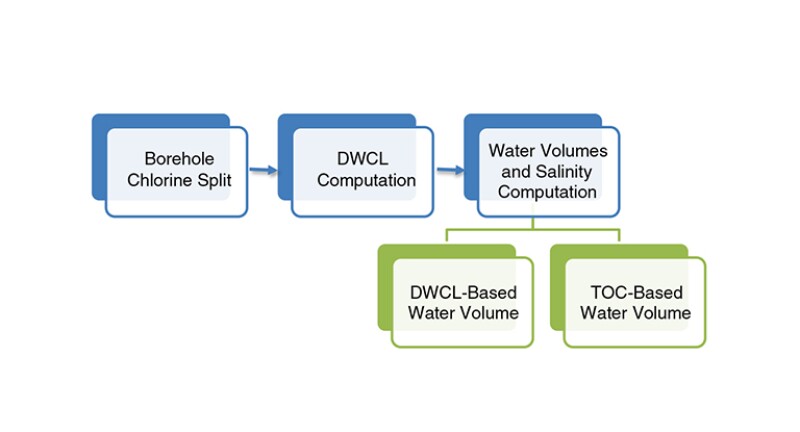In the complete paper, two methodologies are tested to achieve measurement of formation-water salinity. First, a novel dry-weight chlorine (DWCL) measurement from an advanced spectroscopy tool is used to estimate the formation salinity at the depth of investigation of the device. The second methodology uses a new downhole induction resistivity cell in the formation-tester tool. The chlorine measurement, along with the flowline-induction-resistivity measurement, helps enhance the quality of saturation evaluation for quick decision making during logging operations and acceleration of evaluation studies instead of waiting on laboratory results.
Chlorine Work Flow
The ability to quantify chlorine concentration can help derive formation salinity as a continuous curve.


